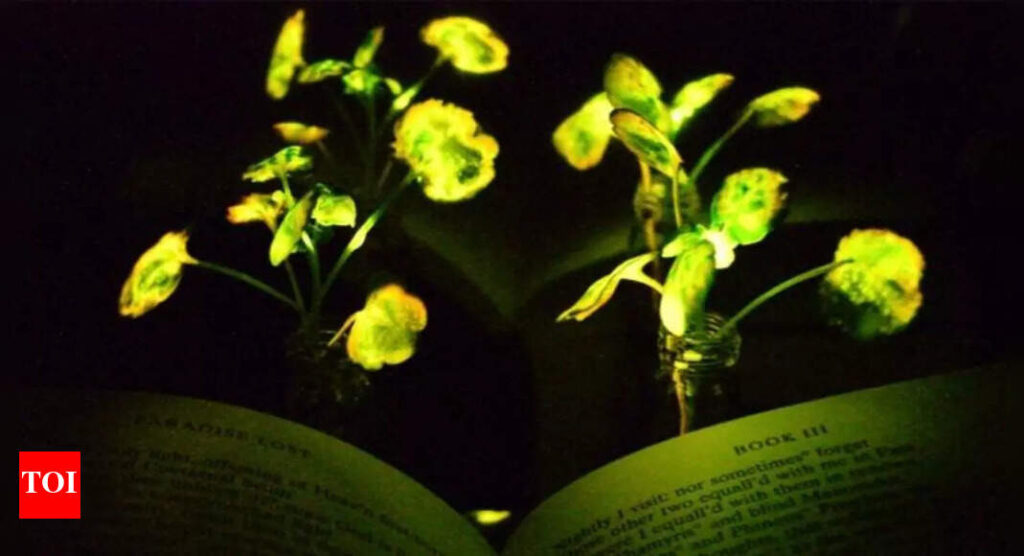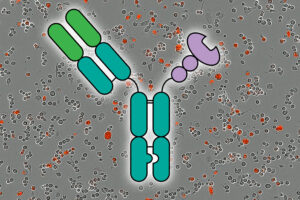
In a groundbreaking development, researchers at South China Agricultural University have created glowing succulent plants that may soon revolutionize urban lighting. These bioluminescent plants, inspired by the ethereal landscapes of the film “Avatar,” offer a sustainable alternative to conventional lighting systems. The study, published in the journal Matter, demonstrates how these succulents, infused with afterglow phosphor particles, can naturally absorb sunlight or LED light and emit a vibrant glow for up to two hours.
The innovation, led by first author Shuting Liu, marks a significant advancement in plant-based lighting technology. Unlike previous attempts that resulted in dim or uneven luminescence, these succulents produce bright, multicolour light comparable to small night lamps. This breakthrough could transform urban spaces, gardens, and homes into eco-friendly, bioluminescent environments, reducing energy consumption and seamlessly integrating nature with futuristic design.
How the Glowing Plants Work
The research team utilized micron-sized afterglow phosphor particles, which can absorb and gradually release light, to achieve the desired luminescence. These particles were introduced into the succulent Echeveria ‘Mebina’, chosen for its unique leaf microstructure. The plant’s narrow, evenly distributed internal channels allowed for uniform diffusion of the particles, resulting in a bright, sustained glow without harming the plant.
Earlier efforts to create glowing plants faced challenges due to the trade-off between particle size and brightness. Nano-sized particles, while easy to disperse, emitted weak light, whereas larger particles provided brighter luminescence but struggled to travel efficiently through plant tissues. The use of micron-sized particles in succulents effectively bypassed this limitation, offering a viable solution.
Potential Applications and Future Prospects
The implications of this research extend beyond aesthetics. The glowing plants hold immense potential for urban planning, architecture, and sustainable design. According to Liu, “Our goal was to make the vision of glowing forests a reality with materials already available in the lab. Imagine glowing trees replacing conventional streetlights.”
Potential applications include:
- Sustainable outdoor lighting: Glowing plants could illuminate pathways, gardens, or parks, reducing reliance on artificial lighting.
- Indoor aesthetic design: Plant-based lighting could enhance decor, create ambient light walls, or offer eco-friendly interior solutions.
- Urban architecture: Futuristic bioluminescent landscapes could be integrated into city planning, offering both functional and aesthetic benefits.
To demonstrate real-world applications, the researchers constructed a glowing succulent wall with 56 plants, providing enough brightness to illuminate nearby objects and allowing researchers to read text without additional lighting. Each plant required only 10 minutes of preparation and cost about 10 yuan ($1.4 USD), highlighting its low-cost, scalable potential.
Challenges and Future Research
While the glow fades gradually, and long-term safety studies are still underway, the findings open new possibilities for sustainable lighting solutions. Researchers are exploring ways to expand the technique beyond succulents, aiming to incorporate larger plants and trees that could eventually replace low-intensity streetlights.
Liu noted the surprising efficiency of succulents in this application: “We expected plants with airy tissue structures to perform better, but succulents diffused particles within seconds, lighting up their entire leaves.”
“This pioneering research not only demonstrates a practical method for multicolour glowing plants but also brings us closer to an era where living organisms can serve as natural lighting sources.” — Shuting Liu
If scalable, this technology could dramatically reduce reliance on artificial lighting systems, merging biology and sustainability in ways once seen only in science fiction. The move represents a significant step toward integrating natural elements into urban environments, offering a glimpse into a future where cities are illuminated by the gentle glow of living plants.




